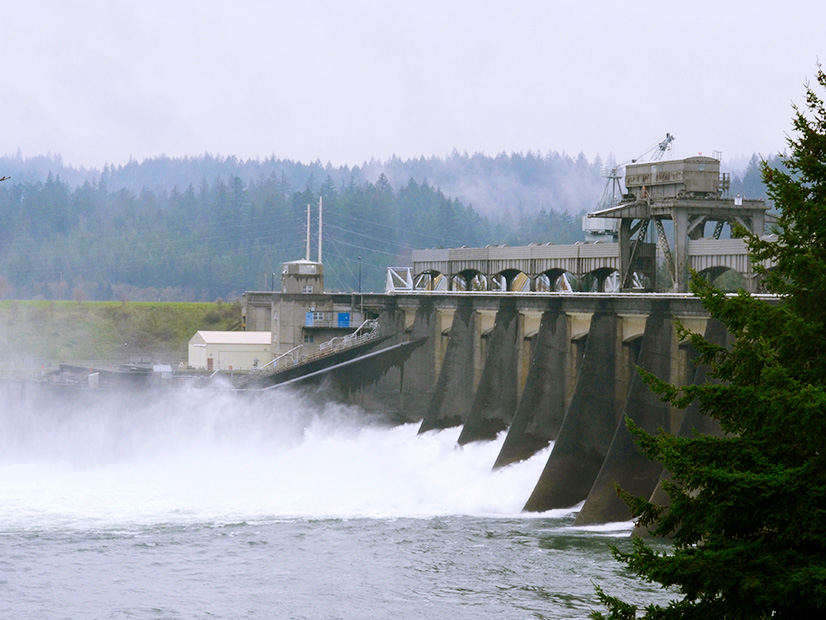The Western Energy Imbalance Market is poised to make its largest expansion ever next spring after the Bonneville Power Administration said Monday that it will join the market in March.
With 15,000 miles of high-voltage transmission and 31 hydroelectric projects under its control, BPA will be the largest transmission- and hydro-provider in a market that currently includes 14 members with territories spanning much of the Western Interconnection.
“This decision aligns with Bonneville’s strategic plan and opens up an opportunity to increase revenues through additional sales of surplus power and to reduce costs through greater efficiencies,” BPA Administrator John Hairston said in a statement. “As the West moves rapidly to decarbonize the grid, Western EIM participation will help us navigate future challenges and leverage opportunities to benefit our customers and the Northwest.”
BPA’s decision comes three years after the federal power marketing agency began exploring membership in the CAISO-operated WEIM and two years after it signed a nonbinding implementation agreement to begin integrating the ISO’s systems into its operations. (See Bonneville Power Signs Agreement with EIM.) The agency said Monday that its internal preparations are “on track” and that it has already begun testing with the ISO.
“Bonneville and its public power customers are highly valued partners for the ISO, and we look forward to further strengthening our working relationships,” CAISO Chief Operating Officer Mark Rothleder said.
BPA’s decision, though not a surprise, marks CAISO’s second victory this month in its competition with SPP, which earlier this year launched the Western Energy Imbalance Service (WEIS). A competing real-time market that has already attracted members in the Rocky Mountain region, the WEIS could provide a foothold for a full RTO in the West. In June, Xcel Energy postponed its effort to join the WEIM in order to consider its alternatives with SPP. (See Xcel Delays Joining EIM to Weigh Options.)
But two weeks ago, the Western Area Power Administration’s Desert Southwest Region signed its own implementation agreement with the WEIM, putting the agency on track to join in 2023. (See WAPA Desert Southwest Region to Join Western EIM.) By that time, the WEIM will consist of 22 members representing 84% of the West’s load, CAISO estimates.
The ISO has taken key steps to seal the deal for BPA’s membership, including revising its tariff to create a new category of default energy bid — a “hydro DEB” — that estimates the opportunity costs for hydro in the WEIM to avoid forcing those resources to make unprofitable trades under certain conditions. (See CAISO Goes 2 for 3 on EIM Hydro Rule Changes.)
And last month, CAISO’s Board of Governors and the WEIM’s Governing Body both unanimously approved a plan that would delegate more authority to the Governing Body over issues affecting the WEIM, a move widely popular among Northwest utilities and power producers. (See CAISO Agrees to Share More Power with EIM.)
Hairston said Monday that BPA’s WEIM membership could be a steppingstone to other forays into regional markets.
“Western EIM participation is a great introduction to emerging markets in the West. We hope to build on this experience to assess future market-based opportunities,” he said.
BPA is already heading in that direction, having last month proposed to participate in the next non-binding phase of Northwest Power Pool’s Western Resource Adequacy Program (WRAP). Interest in the WRAP has expanded to include utilities currently outside the NWPP’s current coverage area. (See RA Program will Require Restructuring of NWPP.)
And BPA signaled that it would also consider developments taking shape farther east.
“In addition to participating in the Western Resource Adequacy Program, BPA is closely monitoring the potential formation of day-ahead markets in the West,” the agency said. “Both the California ISO and Southwest Power Pool have presented initial concepts that could provide additional opportunities and benefits for BPA and its customers.”



